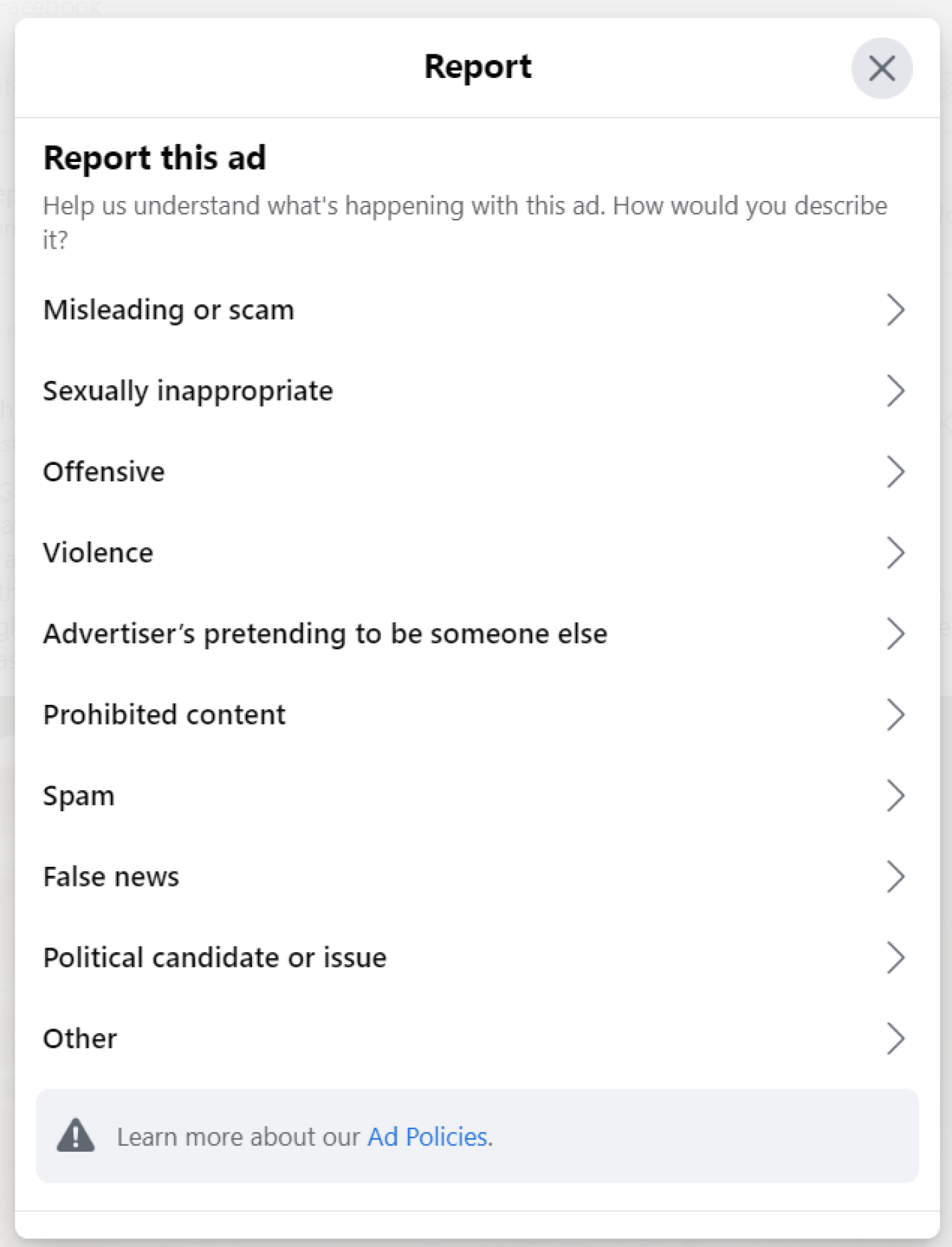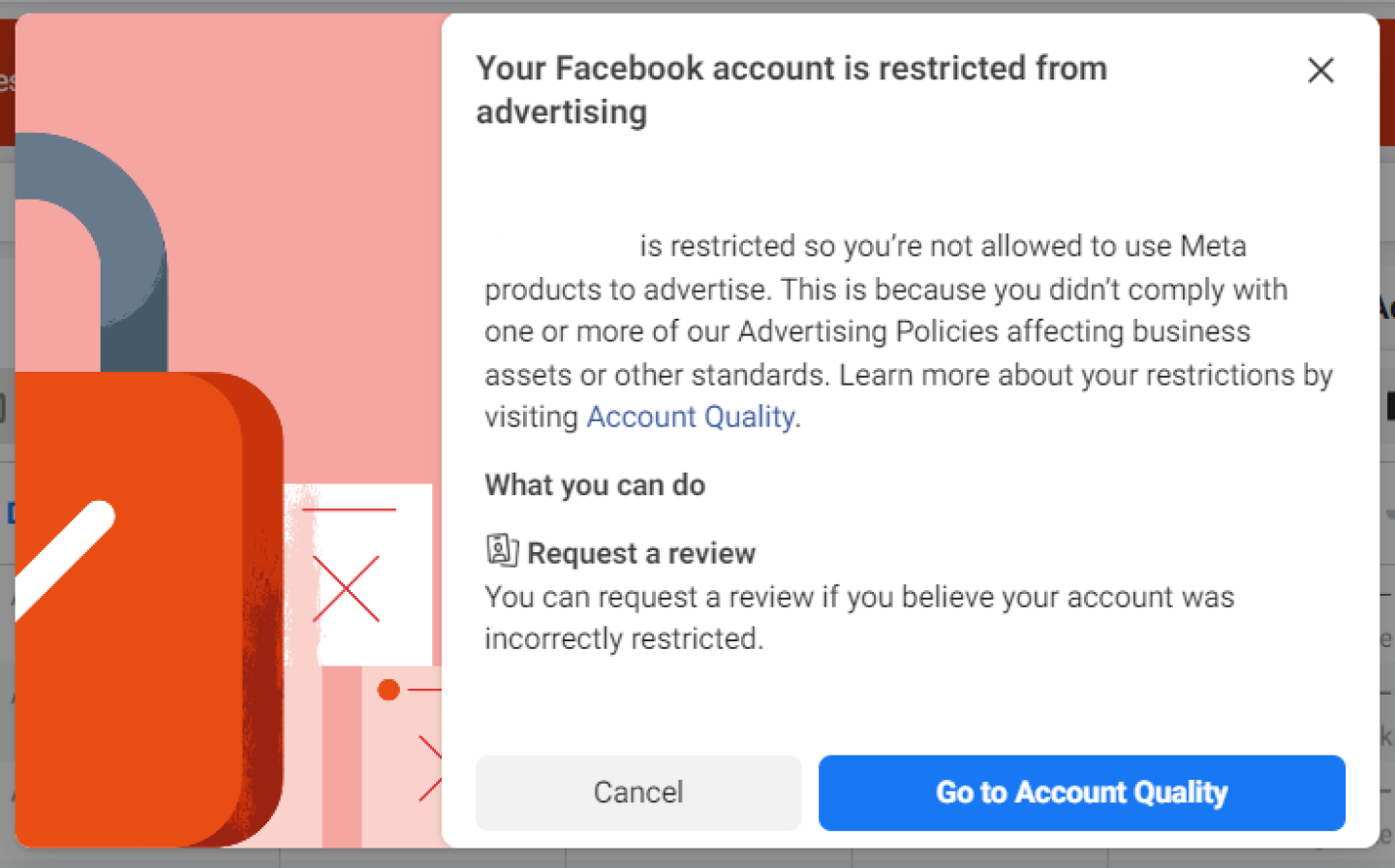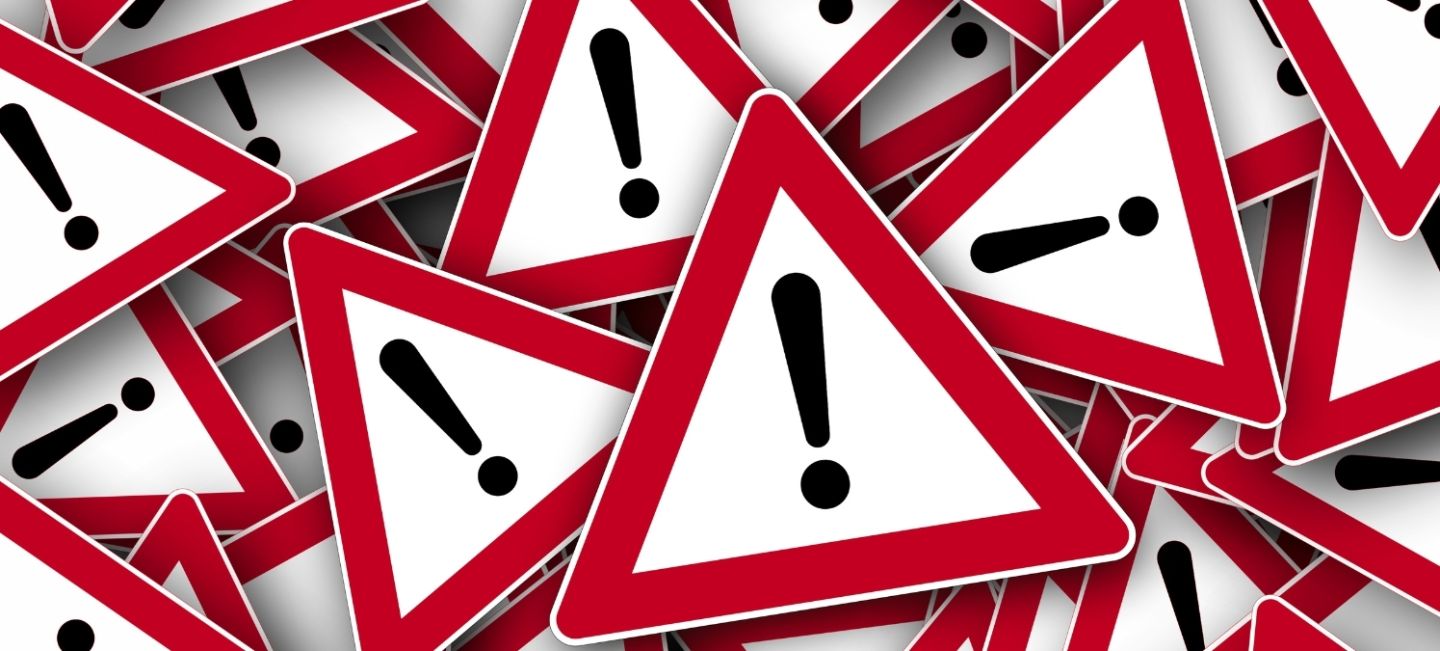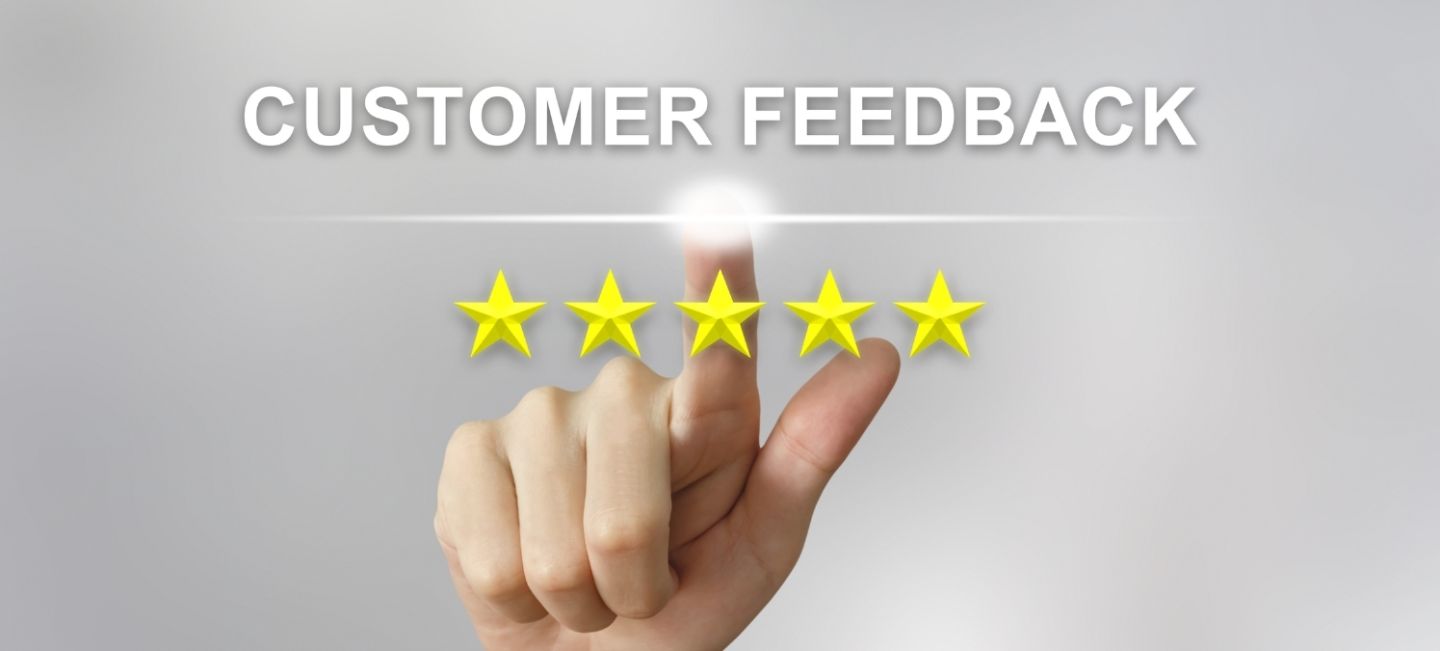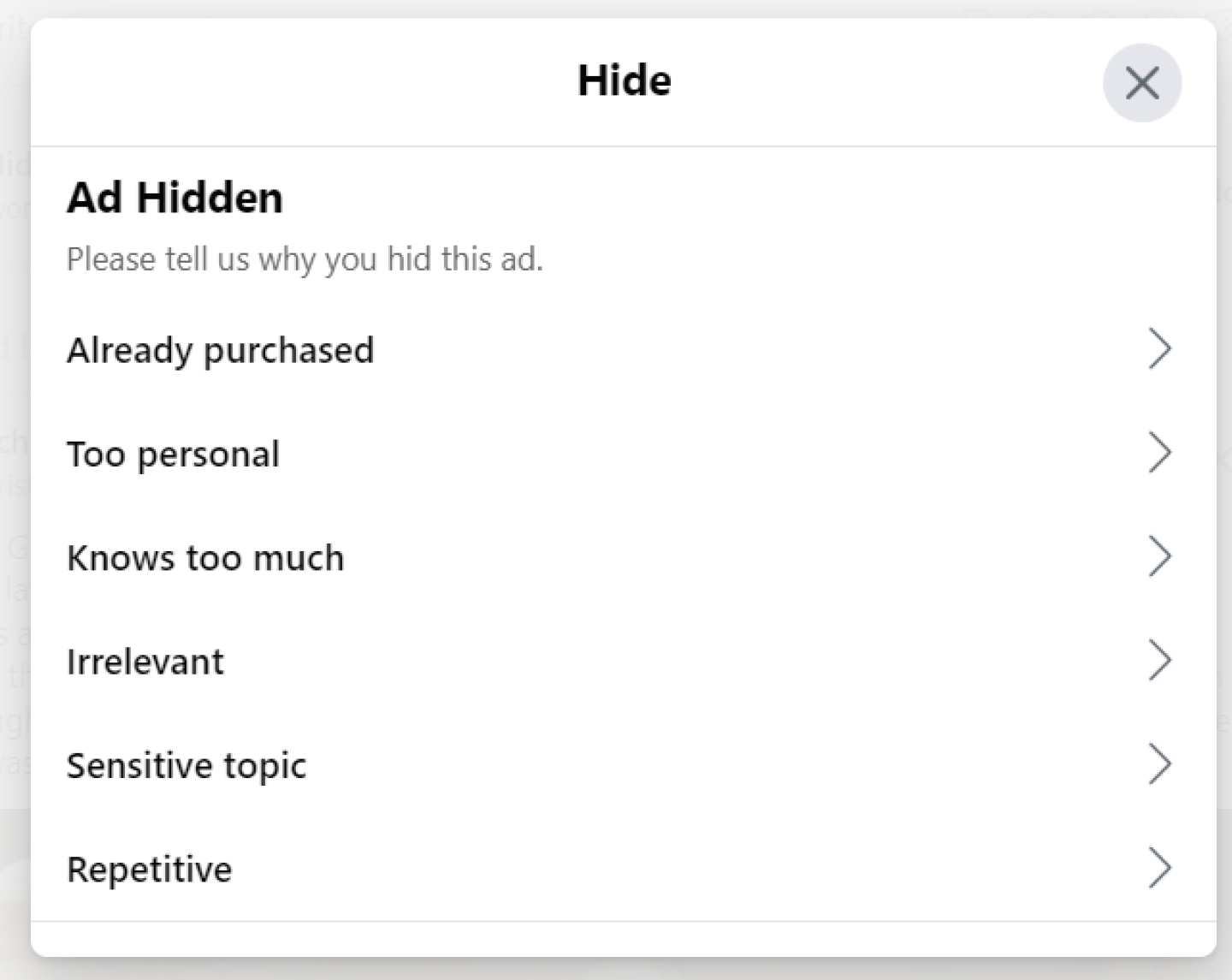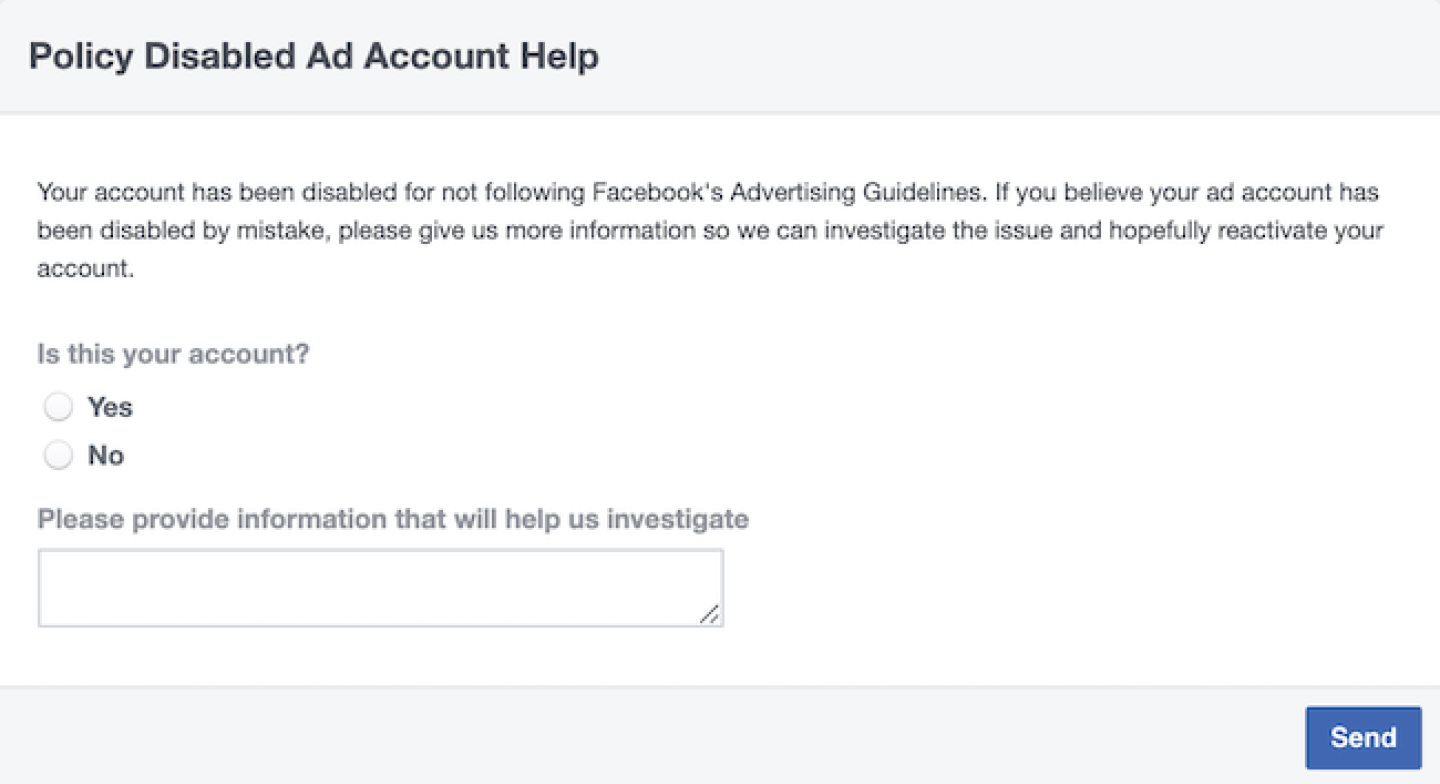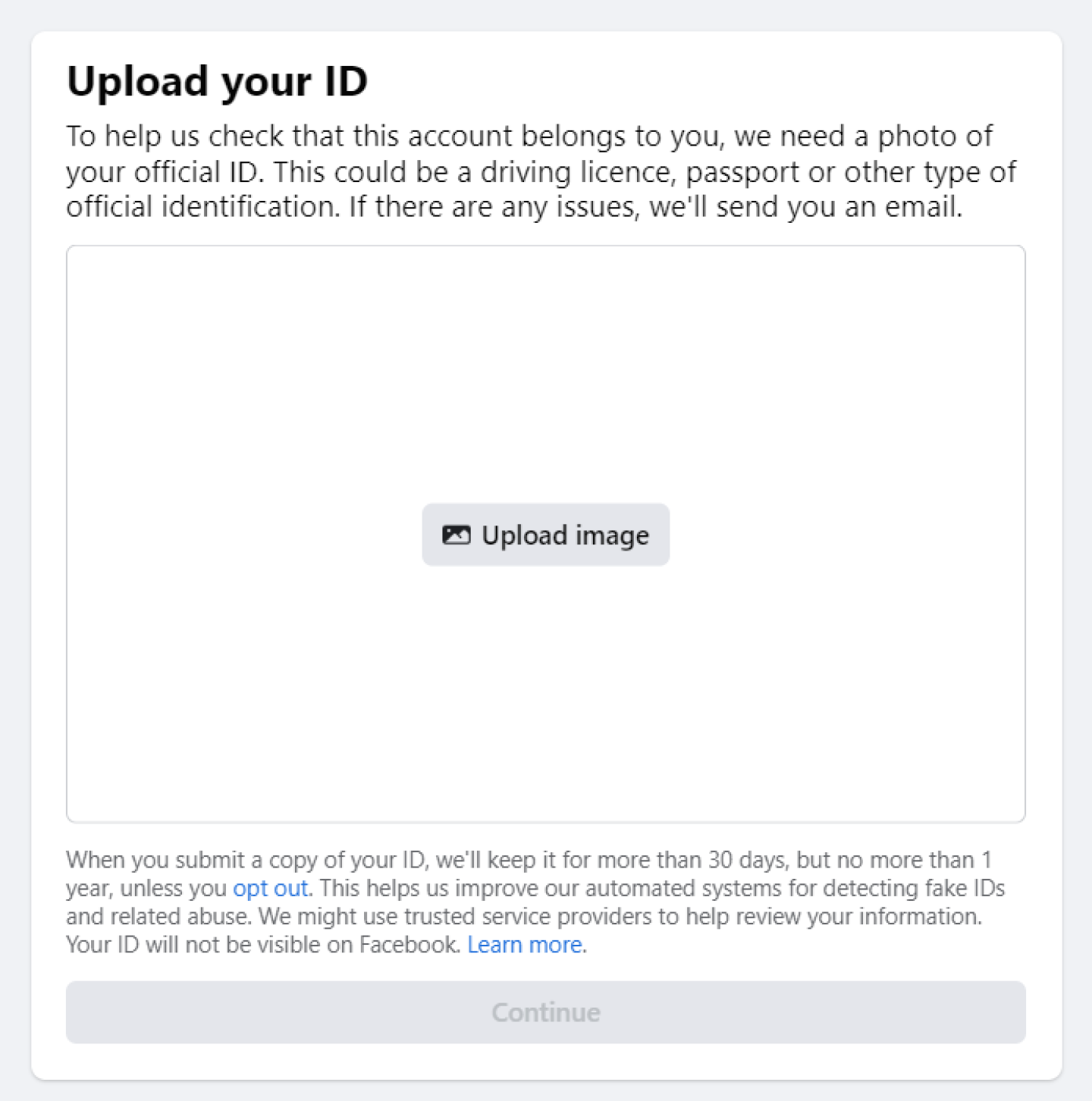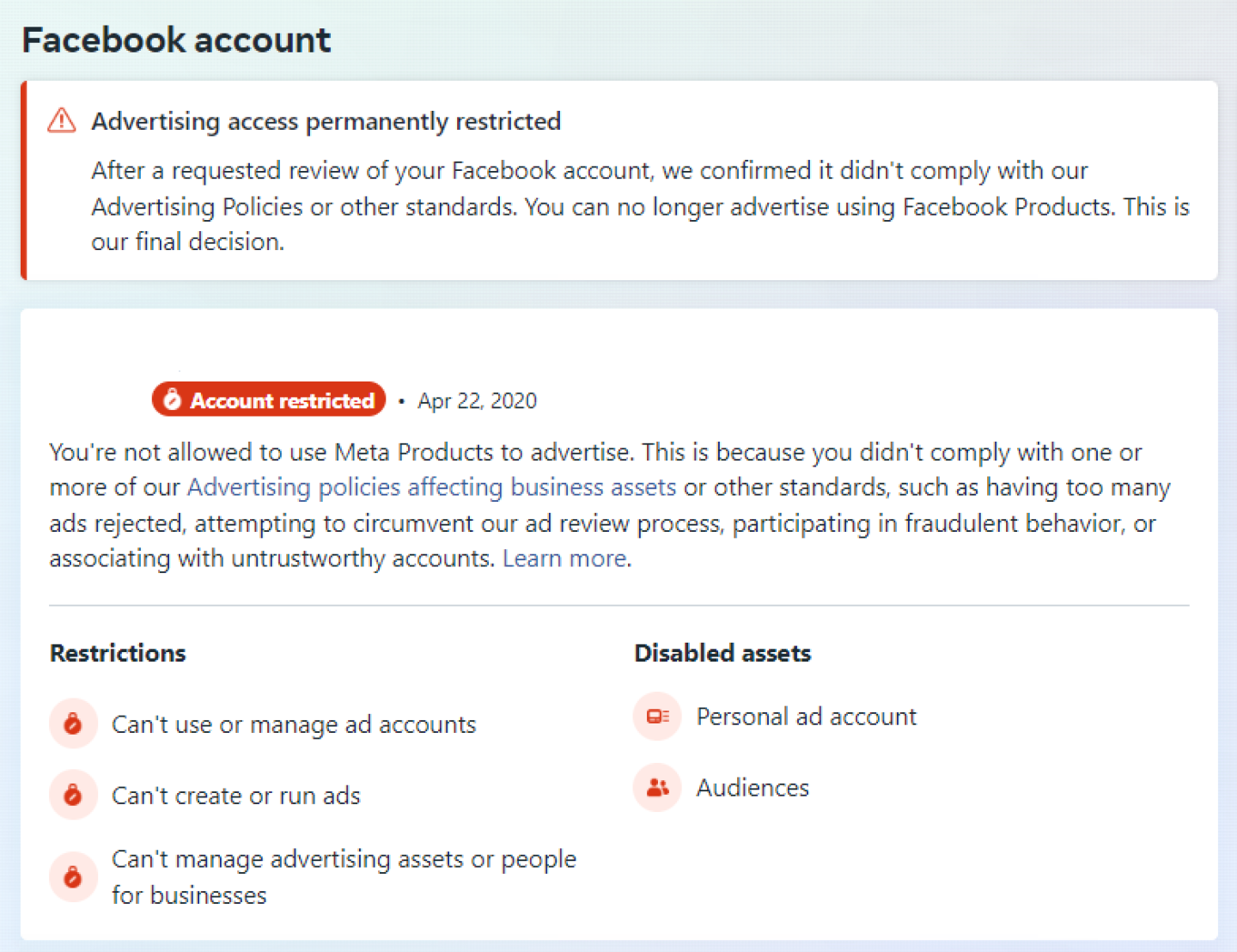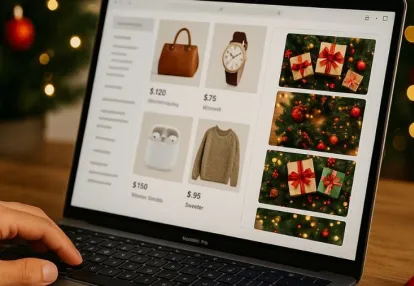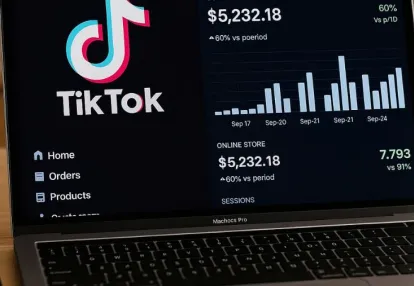
Our spy tools monitor millions of TikTok ads from over 55+ countries. Biggest TikTok Ad Library in E-commerce and Mobile Apps!
Try It FREE
Facebook advertising can be a tricky beast and not every ad that goes out there is always approved. Worse, sometimes you get the dreaded boot! For those who face an unexpected ban, understanding the issue and taking appropriate steps to recovery can be daunting!
The good news is that it's not impossible — all you have to do is know what you're doing. Here's your guide on how to get back into Facebook Ads after getting banned, with just a few steps put in place to make sure you meet their standards.
From explaining why ads may get disapproved to tips on ensuring future campaigns go through with flying colors — this introductory guide provides everything you need for a successful re-entry.
So if you are ready to get your Facebook ad campaigns back on track, read on!
Facebook (now Meta) is a powerful tool for every advertiser in the world. As powerful as this tool is, Facebook can change its advertising policies whenever possible. But before doing so, they will give you a fair warning in advance.
But what about those ads that didn’t have time to comply with new rules?
Ads that fail to meet the guidelines set by Facebook get banned almost immediately, so marketers need to understand why ads get yanked.
These bans often result from violations such as deceptive practices, inappropriate content, or misrepresentations — but they can also happen under less stringent circumstances. Perhaps you didn’t use quite the right images or words in your advertisement, or maybe you posted an ad that was too similar to what a well-known brand was running, or maybe you used the word “you” too much, or maybe even because you overused capital letters. Whatever it is, marketers need to be aware of the rules and regulations regarding advertising on Facebook to avoid being caught unaware and losing their accounts.
There are different reasons why Facebook bans advertising accounts:
Violation of guidelines and community standards
Multiple ad rejections
Questionable advertiser profile
Non-payment of fees
Let us discuss them one by one.
Violating guidelines and community standards can seriously harm advertisers on Facebook. Unsolicited or deceitful marketing practices can lead to violations, such as the unauthorized use of peoples’ contact information, making false or misleading claims about certain products, failing to comply with labeling requirements for drugs and alcohol on the platform, and using images of recognized figures in advertisements without permission.
The core mission of the platform level is to provide a safe and enjoyable experience to users, so all violations of these standards by advertisers can lead to monetary fines and restrictions on paid media. In addition, brands may have their creative content removed and placed in a “penalty box,” where they will no longer be shown online until they have been properly revised.
To ensure that ads don’t violate guidelines or community standards, it is a good idea to craft campaigns that stay true to creatives’ impactful nature while complying with regulations set by social networks. It may seem tedious sometimes, but advertisers must keep the rules in mind when launching campaigns.
Bad customer experiences are becoming more and more commonplace in our world today. They can give you bad reviews simply by clicking the ‘thumbs down’ button on your ads.
But why do ads get banned on Facebook? Generally, this is because of a need for adequate disclosure regarding costs, unfair and inaccurate marketing practices, targeting specific demographics or personal data collection, inadequate customer support systems, or illegal activities.
Two ways by which customers show their dislike over your ad are the “hide ad” and “report ad” options. Make sure you keep track of these negative reactions and see the possible reasons so you can avoid them.
By ensuring everyone follows the proper guidelines and protocols regarding their customers, companies can avoid any dreaded bans from Facebook and ensure that all customers have positive experiences.
Advertising has the power to inspire and reach large audiences, which is why it’s important to monitor ads closely, especially on social media such as Facebook.
Questionable advertiser profile refers to new accounts with suspicious content and suspiciously high daily ad spending. If you have just started on Facebook for three to six months and you have more than a hundred dollars in ad spending, you will highly likely be tagged by Facebook Ads.
That’s why it’s so important to take it slow when advertising. Start with a $5 to $20 daily budget and increase it by only 10-20% per month.
In short, if an ad violates the guidelines established by platforms like Facebook, it will likely be removed, and its publisher might also face penalties.
To avoid being banned, ensure you’re familiar with the Community Guidelines & Ad Policies, focus on good customer experience, and have a verified business account.
As anywhere, it’s important to ensure all the payments related to running those ads are managed properly.
It’s a bit like making sure you pay your bills – no one wants an unpleasant surprise! If unusual charges appear or payment methods don’t go through, Facebook Ads automatically pauses and disables the account.
Thankfully there’s no need to panic, as none of this reflects badly on you! Additional fees won't pile up until all accounts are sorted and paid. However, if you take too long to make a payment, Facebook Ads will likely ban your account for non-payment.
Keeping your ad account secured should be easy if you abide by Meta’s advertising rules and regulations.
Here are some things you can do to ensure your ads will run as intended:
If you post something against Facebook Ads’ terms, you risk having your ad removed or banned from the platform altogether. To avoid this inevitable headache, it is essential to consider the list of things Facebook prohibits in ads, such as tobacco products; adult products or services; dangerous products or services; fraudulent activities, etc.
Before launching any advertising campaign, check all the rules and restrictions, so your business doesn’t get caught unawares and stuck in a potentially expensive situation. After all, nobody wants that!
Creating an effective advertisement is an art form – and also a science. It requires finesse, positioning, and understanding the wants and needs of the customer to create an effective piece. However, there are some taboos that advertisers should always keep in mind to ensure they don’t accidentally cross into hateful and discriminatory areas. Whether due to ethnicity, race, religion, or ability, offensive imagery or language should be avoided if you don’t wish your ad to be banned from platforms like Facebook.
Ultimately, you want your product or service to be viewed as relatable and accessible to a wide audience; using aggressive language will prevent this. Letting go of the urge to “fit in” with micro-target marketing can help in controlling your ads from getting banned. Being mindful of your choice of words is the key tenet here — if it feels or sounds oppressive, it probably is!
Avoid misleading your audiences.
Click baiting is one of the annoying habits that an advertiser should stop doing. Not only it drives people away from the advertisement, but it can also become a cause of mass reporting that could ultimately get your ad account from getting banned. To prevent this from happening, there are some guidelines you should keep in mind.
Firstly, never make false claims about yourself or the dropshipping products or business services you offer, and never manipulate statistics to fit a narrative.
Secondly, consider how a message might be interpreted by different people and cultural backgrounds — even if your intentions are sincere and good-natured.
Thirdly, ensure that the information you put out is verifiable and accurate. Always double-check facts before posting them to be sure they are correct.
Finally, abide by local industry regulations and Facebook Ad’s guidelines when conducting marketing campaigns.
Doing all this will help keep your reputation intact while avoiding any unnecessary bans or warnings from Facebook!
Facebook ads are not a smooth ride at all times. If you fall asleep in the middle of the game, you may get suspended.
With the help of a system called an algorithm, Facebook Ads can monitor and assign a risk score to any erring ad account. This kind of system helps them weed out advertisers who seek to bring unfairness to the online advertising industry.
So, how do you lower your risk score?
Here are some helpful tips:
Consistency is the key.
Consistency is key to keeping your Facebook ads from getting banned. Every time you create and launch a new ad, you must double-check that all guidelines are met.
Ensure it is properly formatted and follows the Community Standards and Ads Policies. Additionally, pay attention to things like placement and location. Where will the message appear? On which devices and in what countries? These questions help keep your ads compliant with Facebook’s rules and regulations. Consistent diligence is paramount to ensuring your ads are accepted by Facebook rather than rejected due to an easily avoidable mishap!
Improve your customer feedback score.
One of the best ways to ensure customer satisfaction is by listening to their feedback. Taking the time to read comments, responding with personalized and helpful answers, and taking action on any customer issues will allow them to leave better, more positive reviews for your page.
Regularly checking for customer feedback will enable you to quickly address any negative comments and act upon those complaints. Additionally, it helps you identify areas you can improve or might not have been aware of, allowing you to correct any issues and make changes if needed. Also, check the percentage of negative reactions to your ads, and see how you can improve.
The image below shows an example of a negative reaction:
Always pay your dues on time.
For smooth sailing and successful running of your Ad account, you want to ensure that all your payment information is up to date. Review the Payment and Billing sections inside your Facebook Ads Manager and check that the credit card you’re using isn’t expired or blocked.
Don’t use a credit card or other payment option already associated with a banned ad account.
It might be useful to check other accounts using the same credit card, just in case. Never use a credit card already used in any other Ad account or Business Manager if one was previously disabled. Remember that it can cause issues if Facebook Ads sees it when trying to access data from your Ad account. If they associate your card with a blocked account, they will automatically be suspicious of you and block your new account as a preventive measure.
Beware of who you give access to your Facebook Ads account.
If you decide to entrust the management of your Facebook Ads account with an agency, freelancer, or even a team member, beware that their actions can determine your account’s fate. It’s important to ensure that none of them ever interacted with disabled ad accounts to prevent any form of reputation contagion that could affect yours.
This might sound like a warning from a science-fiction movie, but it happens way more than we’d like to admit. Thus, before letting someone take over your Facebook Ads account, please do a thorough background check and make sure they have the best intentions.
Strictly one IP address only.
Using VPN and one IP address per account is an effective way to prevent Facebook ads from getting banned. Connecting to a virtual private network allows you to switch your IP address to any location, but make sure you take note of which one! The random locations help hide how many different people are logging into the account (useful if you work with a team), but you have to make it appear as if the access is coming from one place.
We'll discuss more about how you can actually use VPN for your Facebook Ads account later.
Let’s face it; Facebook can take down any advertisement that it deems violating its rules and standards at any given time without prior notice. As your advertisement gets banned, it could seriously affect your business. Even if you think that it got banned by mistake, you still need to undergo a process of recovering it.
But there are ways to recover banned ads from Facebook. While there are many options, they fall under two categories: white hat and black hat.
Let’s discuss white hat methods first.
It’s important to remember that algorithms and human moderators constantly monitor ads. Ads can get banned for many reasons, from simply not meeting guidelines to posing potential user risks.
If your ad does get rejected, Facebook offers an appeals process where you can ask them to review the decision and possibly overturn it.
So, how do you appeal your banned ad?
First, go to Monetization Manager, then click ‘Go to placement’, ‘Go to Ad Space,’ or ‘Go to bundle’ from the notifications at the top of the page.
To appeal your violation, hit ‘Appeal’ or ‘Appeal again,’ depending on whether you’ve appealed.
Finally, add all relevant information, click ‘Appeal’ again, and don’t forget – decisions are final!
If you are lucky, your appeal can take up to five business days for an email decision, so try to provide as much detail as possible with your initial submission; this should help speed things along!
When appealing, it is important to explain what happened clearly and concisely while providing evidence supporting your case. Many marketers have been successful in having their ads restored after submitting an appeal, so don’t hesitate. If you think Facebook has incorrectly blocked your ad, take the time to submit an appeal right away.
Also, remember to keep calm and respectful when appealing.
It is understandable if you get emotional after discovering that your perfectly running ads suddenly got banned. But if you contact them with tempers flaring, you might say something that you will regret later.
Always say the magic words ‘thank you’ and ‘please’ when appealing to Facebook. Remember that the reviewers don’t care what happens to your ad account. So, being humble can go a long way that won’t cost you an extra cent.
Finally, telling Facebook Ads that you intend to remain on their platform despite what happened can help you greatly. In addition, make sure you promise them to take a closer look at all your ads, and that you are following all the rules and regulations. With all these tips in mind, requesting a review of your banned ad and reinstating it should not be too difficult.
Another common reason for your ad account being suspended is not necessarily because of repeat offense and rejected ads — it's possible that Meta is simply suspicious of you.
If that's the case, all you need to do is confirm your identity by submitting a picture of your valid ID.
They'll likely check into their records (using AI) to see if you have a previous account with the social media giant and if you have been banned before.
For issues like this, it'll take anywhere from a day to a week to reinstate your account if they didn't find anything negative about your profile and information. If you don't get your account back, that's the time to be worried.
But what happens if, after being as nice as you can and begging to get your account back, you receive this dreaded message: Advertising access permanently restricted.
What do you do? Do you just curl up in bed and cry?
When we talk about recovering or getting a new Facebook ad account, the black hat method is definitely not what comes to mind. Yet, while this approach involves some methods and tactics that may not be 100% in line with FB’s Terms of Service, sometimes desperate times call for desperate measures. The black hat way might require some finesse though, so make sure you follow the instructions to the letter.
The first thing you can try is creating a new Facebook profile. After all, only one ad account is associated with a profile. But without the right measures, you will just be automatically banned by Facebook, so there are some careful steps you can take. Creating a new ads account using a VPN is key to this technique.
First, you need a trustworthy VPN to give you a unique IP address that you will associate your new ad account. Use ones that have high uptime to avoid getting detected by Facebook. Several good VPNs offer a low monthly rate, such as SurfShark, NordVPN, ExpressVPN, CyberGhost, and more.
Choose an appropriate VPN geo-location and connect, double-check that it is showing the right IP different from your own, then create your new Facebook personal profile.
But don’t use this new Facebook profile yet. Give it at least six months’ worth of activity before connecting it to an ad account, such as adding friends, posting day-to-day stuff, joining groups, and posting comments. This method is called ‘warming up the account.’ Creating a new ad account prevents Facebook from thinking that you are just another black hatter.
Yes, it definitely takes a while to be able to start promoting with Meta Ads again. But if you have the budget, then there is a faster way, and that’s the next option.
If you want to run a campaign with a hundred-dollar daily budget but can’t wait for the appeal, here is a black hat technique you can try:
Buying a Facebook ad account will give you the best chance of staying under Facebook’s radar. You need to use an undetectable (incognito) browser and a proxy. Once that’s done, let three hours pass before creating a page, and then within an hour, add it to your business managers.
Next, link up an ad account with a new credit card. Wait another three hours after doing this. As we've mentioned in the guidelines above to prevent getting banned, don't use a credidt card you've used with a different account before. For campaigns, we suggest a modest budget by allocating $5 per day across five hours and then increasing the budget by $5/hr increments after they’re approved — make sure to give two additional hours as an insurance policy!
When starting with a Facebook Ads account, it's important to keep in mind that a large initial budget could appear suspicious to the algorithm, and you may end up losing your new account quickly. To help prevent this, it is recommended to take a more gradual approach.
Start with a daily budget of around $5 to $20 in the first month and then grow it by roughly 20% each month. This will reduce the risks associated with having too high of a daily spending rate immediately and enable you to keep your account longer so you can continue advertising on the world's most popular social media.
But where, you might ask, can you buy a Facebook account?
You can visit black hat forums and tune in on their conversations on where to buy a ‘warmed-up’ Facebook account. You may encounter the website FAKEbook.pro once in a while.
On this website, you can get phone verified and manually registered accounts with a 2FA code, ensuring maximum security. Plus, all profiles have real-looking pictures befitting the age and gender of the account, making them even more trusted by Facebook. Furthermore, each account comes with distinctive profile pictures that are never used in other accounts – so you can trust that your account will be solid and hard to get banned.
But that’s not all – when you buy their package, you’ll also get a pre-warmed-up account (with consistent daily activities), a fan page created and completed, Business Manager with Ad Account created and confirmed by e-mail, business details filled out, and are 2FA enabled. It’s actually a pretty sweet deal.
And there it is! Now go forth and conquer like never before — safe in the knowledge that although FB has its eyes on you, there isn’t anything it can do if you follow our expert advice!
Facebook does not exactly promote these methods, so due diligence must always be observed when employing this black hat method.
Recovering or reactivating closed ad accounts is relatively straightforward once you know what you’re doing; however, there’s no guarantee that you’ll be getting your account back after multiple rejections. If push comes to shove, there are less than appealing — but equally effective — ways to get you back on track and advertising again.
Tags
Receive top converting landing pages in your inbox every week from us.
Quick Read
Coordinating ads across multiple channels can significantly amplify your marketing ROI. Learn how to create a unified strategy that aligns messaging, timing, and targeting across platforms like Native, Push, and Pop. Discover how seamless cross-channel integration enhances brand recall and drives more conversions. Ideal for marketers aiming to make every ad dollar count through smarter coordination.
Marcus Chen
7 minDec 7, 2025
Case Study
TikTok has emerged as a powerful advertising platform for e-commerce businesses looking to drive sales and grow their customer base. This case study from Peru demonstrates the immense potential TikTok holds for e-commerce businesses.
Kulwant Nagi
7 minJul 14, 2024
Featured
TikTok is a key growth channel for Shopify in 2024. Start by adding the TikTok sales channel in Shopify, linking TikTok For Business, Business Center, and Ads Manager, and installing the TikTok Pixel with your chosen data sharing level. In Ads Manager, build campaigns → ad groups → ads, pick Product Sales (with a linked catalog), target by demographics/interests/behavior, and set a daily or total budget (often $20–$50 minimum). Test optimization goals—Clicks, Landing Page Views, and Conversions—to see what scales. Use short video creatives, Spark Ads, creator content via post codes, clear CTAs, and relevant keywords/hashtags. After approval, track analytics and iterate. For strategy, use Anstrex In-Stream to research competitors by filters, keywords, products, and stores, then model high-performing, demo-style, localized ads.
Jairene Cruz
7 minApr 25, 2024
